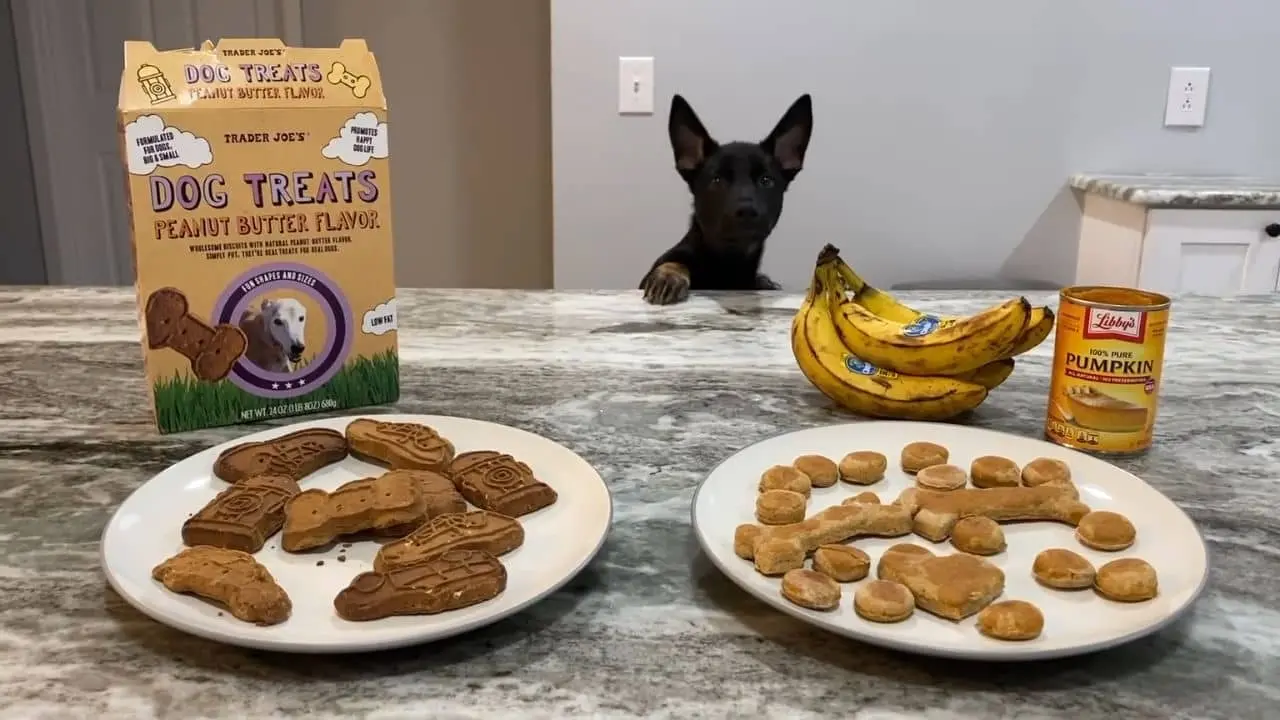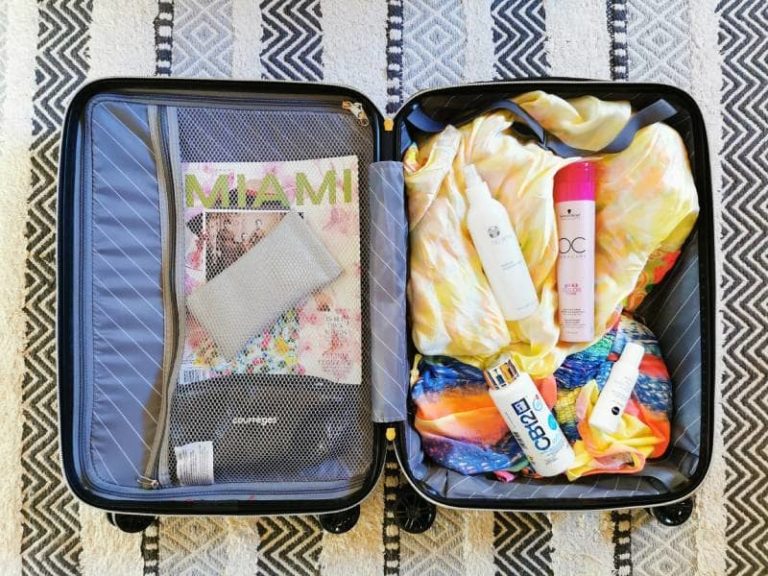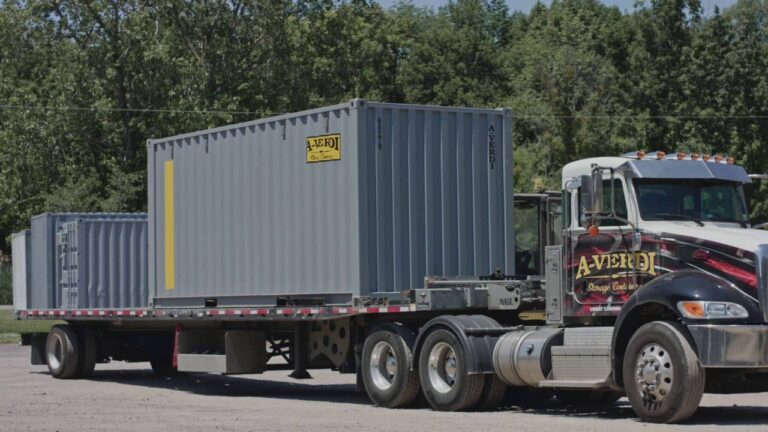How to Store the Different Types of Dog Treats (Great Tips)
Storing pet treats is an essential task for every pet owner who wants to keep their furry friends happy and healthy. If you’re wondering how to properly store dog treats, you’re in the right place!
Storing different types of dog treats properly involves four primary considerations:
- The type of storage container used
- Attentiveness to shelf life and expiration dates
- The choice of storage location
- The importance of freezing and chilling for certain types of treats
Let’s discuss my seasoned insights on how to smartly and efficiently store pet treats. By doing so, we can ensure these treats not only last longer but also retain their nutritional values and flavors, offering our pets the absolute best with every bite.
Storage Basics for Your Dog Treats
Diving into the topic of “Storage Basics”, let me share with you how I personally keep my dog’s treats fresh and tasty. I have honed three key strategies that ensure the treats last longer, while also keeping their tasty nutrients and flavors intact for my dog’s pleasure.
#1 Airtight containers and storage bags
When it comes to storing pet treats, I prefer using airtight containers or storage bags. In fact, the type of airtight container I typically use is quite similar to the pantry containers from Rubbermaid. They help keep the treats fresh and prevent moisture from seeping in.
These airtight containers are a great investment as they can also be used for storing other pet supplies or even human food items.
Storage bags, on the other hand, are lightweight and convenient, making them perfect for toting treats during outdoor activities with my furry friend.
#2 Shelf life and expiration Dates
Keeping an eye on the shelf life and expiration dates of pet treats is crucial to me, and it could make all the difference for your pet’s health if you’d like to follow in my footsteps. I make it a habit to check these dates diligently before purchasing and once more when storing them.
Remember, pet treats, like any food product, won’t stay fresh indefinitely, and letting your pet consume expired treats might lead to health complications.
If you wish to ensure the best quality for your furry friend, consider rotating the treats based on their expiry dates, just as I do. This method ensures that your pet gets to enjoy the treats at their optimum quality.
#3 Storage location
Finding the right storage location plays a significant role in preserving the pet treats’ quality. I’ve found that it’s best to store them in a cool and dry place with a temperature below 80°F, as high temperatures or humidity can cause the nutrients to break down or even promote mold growth.
I also prefer to keep the treats away from direct sunlight and out of reach of my pets, just in case their curiosity gets the better of them.
#4 Keep your treats and chews fresher longer: the power of freezing and refrigerating
The fourth principle specifically targets a common practice among pet owners who prefer to make their own treats. It’s essential to understand that not all treats have the same storage requirements. For instance, homemade treats with meat are perishable and should be refrigerated immediately. However, they should only be kept in the fridge for 3-4 days to ensure freshness and safety.
On the other hand, homemade treats that are primarily made of peanut butter can be refrigerated and last up to a week. This is because peanut butter has a longer shelf life than most meats.
It’s important to remember that these guidelines apply specifically to homemade treats, as commercially prepared treats often contain preservatives that extend their shelf life. Always remember to cool homemade treats before refrigerating or freezing to avoid moisture build-up, which can lead to spoilage.
As you can see, my strategy for preserving pet treats revolves around four essential principles: utilizing airtight containers, diligently tracking shelf life and expiration dates, selecting the most suitable storage location, and understanding the importance of freezing or refrigerating certain types of treats.
Let’s now explore which containers or bags to use, depending on the type of dog treats, to ensure their freshness and safety.
What Are the Best Types of Containers To Use For Storing Different Types of Dog Treats

As a dog owner, I know that there are many different types of dog treats out there, and storing them properly is essential to keep them fresh and safe for my furry friend.
In this section, I’ll share some great tips on how to store various types of dog treats, including crunchy, soft and chewy, dehydrated or freeze-dried, animal parts, long-lasting chews, human food (fruits and vegetables), and homemade dog treats.
Crunchy Dog Treats
Crunchy treats, like biscuits, are fairly simple to store. I make sure to keep them in an airtight container in a cool, dry location. This helps to prevent the treats from becoming stale and losing their crunch. More details about proper storage of pet food and treats can be found on the FDA website (for more information, see the link in the sources section).
Soft and Chewy Dog Treats
When it comes to soft and chewy dog treats, I’ve found that it’s important to keep them in a sealed, airtight container or bag. This helps to keep moisture out and maintain the treat’s chewiness.
Interestingly, many manufacturers are attuned to this need and often distribute soft and chewy dog treats in resealable bags, making storage quite convenient. Buddy Biscuit’s Soft & Chewy Buddy Biscuits, for example, come in resealable bags for easy storage.
Even so, storing them in the refrigerator can extend their shelf life, but irrespective of storage methods, I always make sure to check the expiration date on the packaging.
Dehydrated or Freeze Dried Treats
Dehydrated or freeze-dried treats are loved by many dogs, including my dog. To store them properly, I again use airtight containers, but I also try to minimize their exposure to heat and humidity.
Keeping them in a dark, cool location will help to preserve their texture and flavor.
Animal Parts
For animal parts such as pigs’ ears or bully sticks, I store them in a dry, cool place in a sealed container. Proper storage can help maintain their freshness and prevent any undesirable odors.
Remember that natural treats like these can spoil, so it’s important to discard them if they show any signs of mold, strange odor, or changes in texture or color.
Long-Lasting Chews
When storing long-lasting chews such as rawhide or synthetic bones, I ensure they’re kept in a cool and dry place. This practice helps to prevent the chews from drying out, becoming brittle, or becoming a breeding ground for harmful bacteria.
Of course, like any other treat, it’s essential to check the condition of these chews before giving them to your dog.
By ‘condition’, I mean the overall physical state of the long-lasting chews. It’s important to check for any visible signs of spoilage, such as mold, unusual smells, discoloration, or changes in texture.
Furthermore, ‘condition’ pertains to the firmness or hardness of the chew. Some chews can become overly hard or brittle over time, potentially posing a choking hazard or damaging your dog’s teeth. Therefore, always check the chew’s condition to ensure it’s not overly hard or brittle and free from any signs of spoilage before giving it to your dog.
Human Food (Fruits and Vegetables)
Some human foods, like fruits and vegetables, can be given to dogs as treats. When doing this, I make sure to store them in a refrigerator or a designated container to preserve their freshness. As always, take appropriate precautions and ensure that the food is safe for your dog to consume.
In this case, I’m using the same types of food containers that I would use for my own food.
Homemade Dog Treats
When it comes to homemade dog treats, proper storage is key. I typically store them in an airtight container once they’ve cooled down to room temperature. Depending on the ingredients used, some homemade treats may need to be stored in the refrigerator. You can find recipes and more information on homemade dog treats on the American Kennel Club website.
Remember, keeping your dog’s treats in good storage conditions can help to maintain their freshness and ensure that they remain a safe and enjoyable treat for your furry companion.
Preservation and Freshness Tips
When I store my pet’s treats, there are a few techniques I follow to ensure they remain fresh and tasty for a longer time. Here are some insights into those methods:
Firstly, I always make sure to refrigerate any unfinished wet pet food or treats. This helps in preserving their freshness and prevents any spoilage. I usually store them in a sealed container or cover the can with a plastic wrap to prevent condensation and odor transfer in the refrigerator.
If I have some raw pet food, my go-to storage method is using the freezer. I store them in a sealed container, separate from other foods. When I’m ready to thaw and use the raw pet food, I transfer it to the refrigerator to maintain its freshness and avoid any bacteria growth.
When it comes to dry pet treats, I make sure to store them in a cool, dry place, away from any direct sunlight or high humidity. I also make sure to keep an eye on the expiration date and avoid stocking up on too many treats with added preservatives, as those chemicals may not be the healthiest choice for my pet!
Here are some additional tips I follow for pet treat preservation:
- I prefer using treats with natural preservatives like vitamin E or mold inhibitors like rosemary extract, as they are safer and healthier options for my pets.
- When I buy treats containing nutrients and vitamins, I prioritize those with limited ingredients and no artificial additives to ensure high-quality and healthy food for my pets.
- To prevent freezer burn, I make sure to store frozen pet treats in airtight containers or sealable freezer bags.
- As a bonus tip, I’d like to share that I absolutely love using plastic-free storage bags from Stasher for my pet’s treats. They are eco-friendly and offer great functionality for keeping treats fresh!
By following these preservation and freshness tips, I can ensure that my pet’s treats remain safe and enjoyable for them while maintaining their nutritional value.
Final Thoughts
Proper pet treat storage is crucial for maintaining freshness and preventing contamination. One method I’ve found effective is using airtight containers or bags, which keeps treats safe from moisture, air, and pests. From experience, I would advise pet owners, especially dog owners, against using glass containers for storing treats. If your curious pup were to knock it over, it could be dangerous.
Keeping an eye on the shelf life and expiration dates is another critical step to ensure treats remain safe for your pet’s consumption. Always remember to check the packaging for these details as different treats have varying shelf lives.
Selecting an appropriate storage location — a cool, dry place away from direct sunlight and heat — aids in maintaining treat quality and preventing spoilage or bacterial growth.
And if you’re the kind of devoted pet parent who crafts homemade treats for your cherished canine companion, remember the importance of proper storage – don’t forget to freeze or refrigerate them to maintain their freshness and quality.
Furthermore, I always adhere to certain safety tips for handling and storing pet treats. I wash my hands before and after handling the treats and store them separately from my own food to prevent cross-contamination.
In conclusion, being diligent with pet treat storage methods and mindful of their storage locations can greatly contribute to keeping your pet’s treats fresh, safe, and enjoyable. By adhering to these guidelines, you can ensure the health and well-being of your beloved pet!
I hope my article helps you. Thanks for reading!
Sources
- Food and Drug Administration: Proper Storage of Pet Food & Treats
- American Kennel Club: How to Make Homemade Dog Treats
- Centers for Disease Control and Prevention: Pet Food Safety
- Earth and world : Tips On Properly Storing Your Pet’s Snack On A Dog Treat Container







